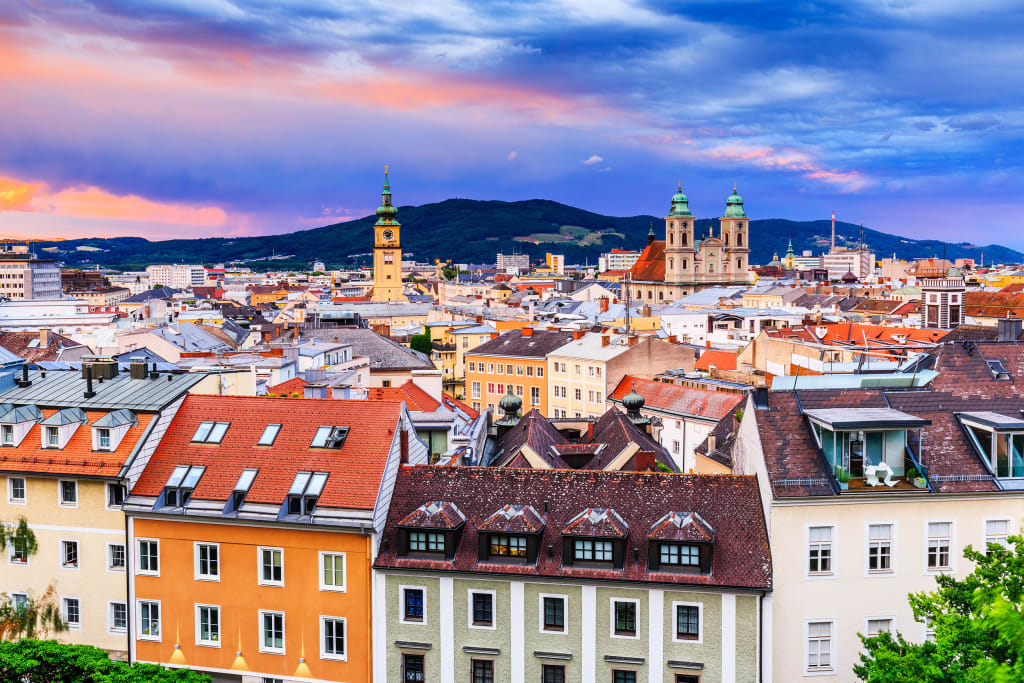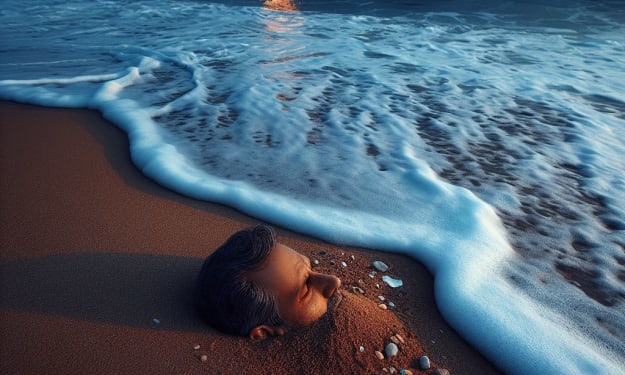Beautiful Linz on the Danube River
Sightseeing in a city in Austria and the rest of the country

Linz is the third-largest city in Austria in the northern part of the country on the Danube 30 kilometers south of the Czech border.

The Lentos Art Museum is located in a modern building built with glass and steel overlooking the Danube. This is one of the finest modern art collections in the country with artworks by Warhol, Schiele, Klimt, Kokoschka, and Lovis Corinth. The building itself is a work of art that looks fantastic when lit up at night. There are more than 1,500 artworks among them masterpieces from the 19th century and Classical Modernism. From the 1920s and 1930s comes a collection from the German and Austrian Expressionist movement. You can also enjoy international artworks from the postwar period and see sculptures, sketches, and photos.

The Ars Electronica Center spotlights technology, science, and digital media of the future. Visitors can interact with robots, and animal digital objects, convert their names to DNA, and virtually travel to outer space in the laboratories here. It looks like a futuristic ship near the Danube after dark when the LED glass skin kaleidoscopically changes color the center opened in 2009. It also hosts the yearly Ars Electronica Festival which honors world leaders in computer music, animation, interactive art, and web design. On display are also temporary and special exhibits.

For enjoyment and entertainment head to the Hauptplatz. The square is the place to greet, meet, and watch street performers. There are pavement cafes. It is the centerpiece square in Linz surrounded by Baroque and pastel-colored Renaissance houses. Here you'll find the impressive Trinity Column rising 20m in the air and made of white marble. This is a symbol of the Baroque period and was erected in gratitude by those who have survived different kinds of disasters. The column protects the residents of the city from war, fire, and plague.

The Musiktheater is a geometric opera house designed by London architect Terry Pawson. It hosts operas, operettas, ballets, musicals, and productions for children.

The Landesgalerie has made its home in a late 19th-century building. It highlights 20th and 21st century paintings, photography, and installations. The exhibits are rotating and often focus on artwork by Upper Austrian artists like Alfred Kubin and Valie Export. You can also enjoy the open-air sculpture park.

The Schlossmuseum has made its home in the Linz Castle and sits on a hilltop overlooking the Danube and offering impressive views of Linz. This museum features artwork gathered from abbeys and palaces over the centuries. You can enjoy art, archaeology, historical weapons and instruments, technology, and folklore. Among the highlights here are the Gothic ecclesiastical paintings. The South Wing offers permanent exhibits focusing on nature, and technology, as well as some temporary exhibits.

Slightly below Linz Castle is St. Martin's Church, the oldest church in Austria, still preserved in its original form. This is an 8th-century church built of the earliest Carolingian architecture. Highlights here include the 15th-century frescoes, outlines of old doorways and windows, a Roman oven, and stones bearing Roman inscriptions.

The twin towers of the 17th-century cathedral Altar Dom or Old Cathedral are an impressive sight. The cathedral has incredible stucco work, a pink marble altar, and gilt pillars. Austrian composer Anton Bruckner served as an organist here from 1856 to 1868.

The Neuer Dom or New Cathedral of the Immaculate Conception is an amazing three-aisled neo-Gothic pillard basilica. It was built of yellow sandstone with an ambulatory surrounded by a ring of chapels. It is the creation of German architect Vinzenz Statz featuring a 135m tower, a great organ built in 1968, and the crypt of Franz Josef Rudigier, Linz’ best-known Bishop. The cathedral also has a stained glass window referred to as the Linz-Window, depicting the history of the town.

The Bishop's Palace dates from 1726 and is known for its unique iron gateway and staircase built in 1227.

St. Florian Augustinian Abbey is located twenty minutes south of Linz and well worth a visit. It was built over the grave of St. Florian, a Roman official martyred in 304 AD for becoming a Christian. This Baroque building was built between 1686 and 1751 and is an important theological seminary well-known for its boys' choir. Highlights include the fascinating main doorway with the massive statues of Atlas and Virtue; the Abbey Church with its twin Baroque towers, stucco decorations, and Bruckner organ. In the crypt lies organist Anton Bruckner. You can see the Imperial Apartments once used by visiting Emperors and Popes. St. Sebastian's Altar has 14 early 16th century paintings by Albrecht Altdorfer, a master of the Danube School; the impressive library with ceiling paintings and Rococo gallery and the St. Florian art collection. For relaxation, there is a restaurant and there are B&B accommodations available in the guesthouse.

The Postlingberg is a 539m hill standing high on the left bank of the Danube. There is a viewing platform over the city and it has become a popular tourist destination. On-site are the Postlingberg Pilgrimage Church and the Linz Grottenbahn.

The Grottonbahn is an underground dragon train that will take you through the Land of Dwarfs and has a walk-through model of historic Linz. On the way up the hill, you'll find the Linz Zoological Garden.

Zoo Linz is enjoyed by both adults and children, There are more than 600 animals here from different species. Among the highlights are exotic species among them apes, lizards, snakes, and birds in the tropical hothouse. Children enjoy interacting with domestic animals here.

Linz Botanical Gardens are among the most lovely in Europe. There are more than 10,000 different kinds of plants and five greenhouses with exotic plant types. In the garden is a unique collection of cacti. The gardens host special shows and exhibits.

Exploring Austria
Melk Abbey sits atop a rocky outcrop overlooking the town of Melk and the Danube. It is one of the world's most famous monastic sites. The twin-towered church is an impressive site. Among the highlights here is the tomb of Saint Coloman of Stockerau, and the 196-meter-long Imperial Corridor with portraits of Austria's rulers.

Dachstein Caves are among Europe's most impressive cavern networks. Among the highlights here is the Giant Ice Cave with sub-zero summer temperatures.

Above ground, visitors can enjoy the 5 Finger viewing platform. This is a metal structure hanging over a 400-meter sheer drop offering fantastic views of the surrounding Alps.

In winter skiers love the 1,998-meter Kitzbuheler Horn. The summit can be reached by cable car via Pletzeralm. This is considered one of the finest summit views in Tyrol. In the summertime, visitors enjoy hiking.

On the summit, you'll find the Gipfelhaus, a restaurant. There is also a chapel and an Alpine garden.

In Hochosterwitz you'll find the most important medieval castle in Austra. Burg Hochosterwitz perches on a crag 160 meters above the valley. A steep road winds its way to the castle through 14 defensive gates to a lovely arcaded courtyard.

The Grossglockner Hochalpenstrasse stretches from Bruck to Pinzau to Heiligenblut, at the foot of the Grossglockner. This is one of the most magnificent mountain roads in Europe. The Grossglockner at 3,798 meters is the highest mountain in Austria.

The road gives access to the massive Hohe Tauern mountain range. Here Franz-Josefs-Hohe is famous and known for its spectacular views all over Europe.

In Klosterneuburg is the lovely Klosterneuburg Abbey up a flight of steps that lead down to the 12th century St, Leopold's Chapel where Leopold III is buried. It is known for the famous Verdun Altar consisting of 51 panels of champleve work on gilded copper that depict Biblical scenes by Nicholas of Verdun.

The Church of Maria Saal-more sits perched on a hill high above the Zollfield. It is one of the leading places of pilgrimage in the state of Carinthia in southern Austria. This twin-towered church was built in the Gothic style in the first half of the 15th century.

The Krimmler Arch plunges 380 meters into three huge cascades. It perches high above the Salzachtal in a wooded valley not far from the village of Krimml. The Krimml Waterfalls are lovely. This is a wonderful place to go hiking. Expert climbers enjoy tackling the 2,911-meter-high Glockenkarkopf on the Italian frontier.

On the western edge of the Tennengebirge is the spectacular World of the Ice Giants. This is the largest system of ice caves in the world. They were discovered in 1879. Stone steps take you to the Eistor or Ice Gate and further on to the great Ice Palace. Guided tours are available.
Please click on the link below to read about the capital of Austria, Vienna:
https://vocal.media/wander/beautiful-vienna-on-the-danube
About the Creator
Rasma Raisters
My passions are writing and creating poetry. I write for several sites online and have four themed blogs on Wordpress. Please follow me on Twitter.






Comments (1)
Great work! And awesome pictures!